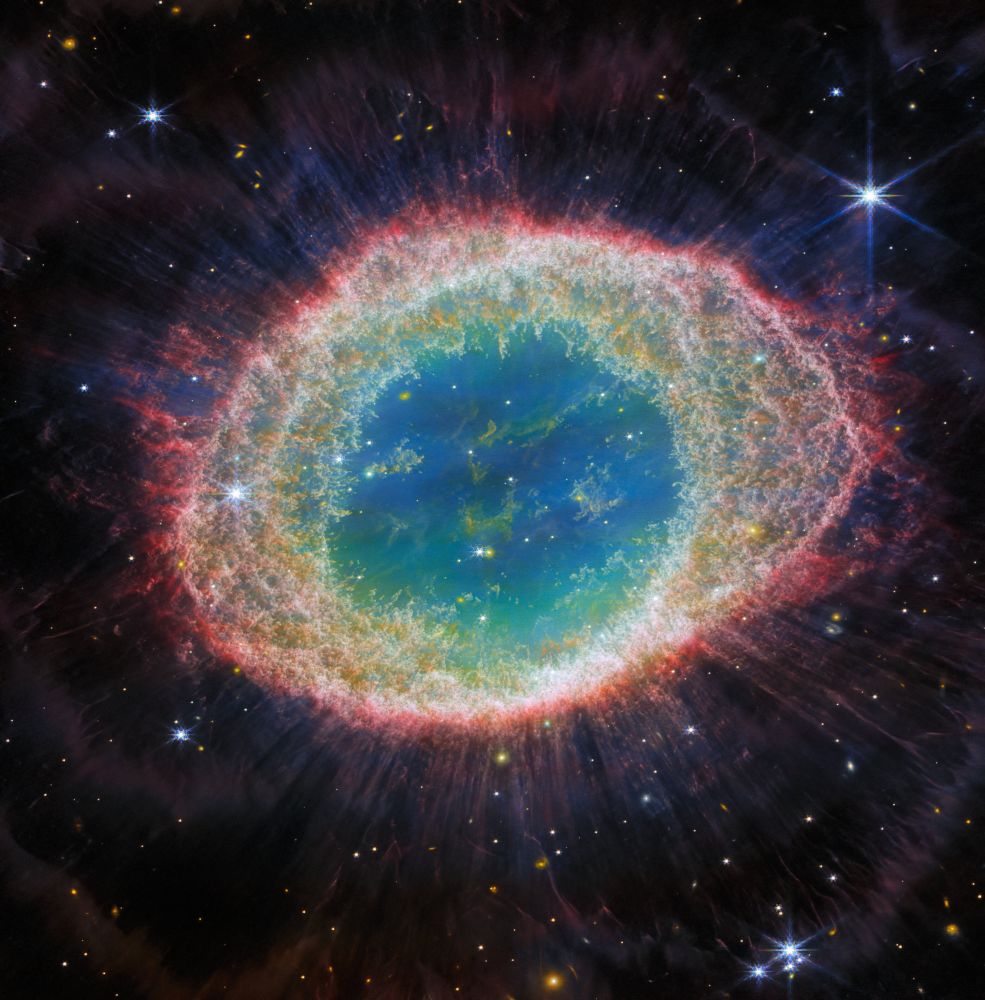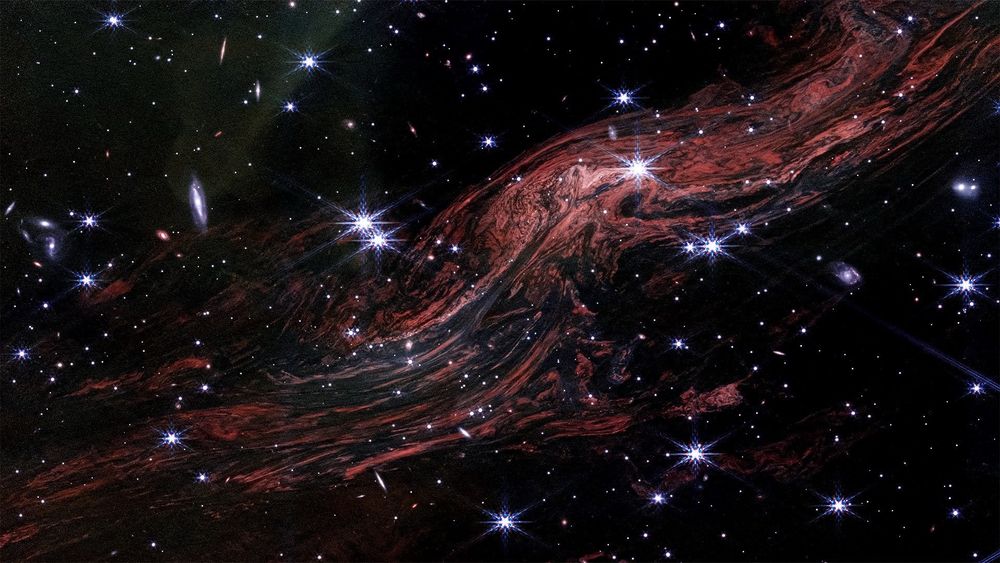
As the name implies, this reflection nebula associated with the star Rigel looks suspiciously like a fairytale crone. Formally known as IC 2118 in the constellation Orion, the Witch Head Nebula glows primarily by light reflected from the star. The color of this very blue nebula is caused not only by blue color of its star, but also because the dust grains reflect blue light more efficiently than red. A similar physical process causes Earth's daytime sky to appear blue.

A composite image of a pulsar wind nebula which strongly resembles a ghostly purple hand with sparkling fingertips, set against a black, starry backdrop.
X-ray observations by Chandra and IXPE reveal that the shape of this pulsar wind nebula strongly resembles a human hand, including five fingers, a palm and wrist. The bright white spot near the base of the palm is the pulsar itself.
The three longest fingertips of the hand-shape point toward our upper right, or 1:00 on a clock face. There, a small, mottled, orange and yellow cloud appears to sparkle or glow like embers. This orange cloud is part of the remains of the supernova explosion that created the pulsar. The backdrop of stars was captured in infrared light. Credits: X-ray: NASA/CXC/Stanford Univ./R. Romani et al. (Chandra); NASA/MSFC (IXPE); Infrared: NASA/JPL-Caltech/DECaPS; Image Processing: NASA/CXC/SAO/J. Schmidt

A nebula appearing like a “face” with two “eyes” visible in the center.

Active regions on the sun combined to look something like a jack-o-lantern’s face. The active regions in this image appear brighter because those are areas that emit more light and energy. They are markers of an intense and complex set of magnetic fields hovering in the sun’s atmosphere, the corona.
Caption credit: NASA
SPOOKY SPACE PICTURES FOR HALLOWEEN 🎃🌌
01.11.2025 00:55 — 👍 355 🔁 75 💬 4 📌 1

Al Doyle of LCD Soundsystem on stage at Red Rocks last night 💖🏳️⚧️🫂 #ProtectTransKids
14.08.2025 13:45 — 👍 2003 🔁 267 💬 24 📌 12

A star cluster is shown inside a large nebula of many-coloured gas and dust. The material forms dark ridges and peaks of gas and dust surrounding the cluster, lit on the inner side, while layers of diffuse, translucent clouds blanket over them. Around and within the gas, a huge number of distant galaxies can be seen, some quite large, as well as a few stars nearer to us which are very large and bright.

The image is divided horizontally by an undulating line between a cloudscape forming a nebula along the bottom portion and a comparatively clear upper portion. Speckled across both portions is a starfield, showing innumerable stars of many sizes. The smallest of these are small, distant, and faint points of light. The largest of these appear larger, closer, brighter, and more fully resolved with 8-point diffraction spikes. The upper portion of the image is blueish, and has wispy translucent cloud-like streaks rising from the nebula below. The orangish cloudy formation in the bottom half varies in density and ranges from translucent to opaque. The stars vary in color, the majority of which, have a blue or orange hue. The cloud-like structure of the nebula contains ridges, peaks, and valleys – an appearance very similar to a mountain range. Three long diffraction spikes from the top right edge of the image suggest the presence of a large star just out of view.

This image of the Ring Nebula, taken by Webb’s Near-Infrared Camera, appears as a distorted doughnut. The nebula’s inner cavity hosts shades of blue and green, while the detailed ring transitions through shades of orange in the inner regions and pink in the outer region. The ring’s inner region has distinct filament elements. Stars litter the scene, with a particularly prominent star with 8 long spikes in the top right corner.

An infrared light echo traveling from the lower left through the upper right of the image. The image is speckled with dozens of white stars, some showing Webb’s signature 8-point diffraction spikes, against the black background of space. The image also shows tightly packed, glowing red filaments that resemble muscle fibers or wood grain.
my current favorite jwst images 🌌
19.01.2025 03:34 — 👍 7855 🔁 781 💬 58 📌 27
I just want to meet to duolingo marketing team
03.12.2024 06:08 — 👍 0 🔁 0 💬 0 📌 0
I need to focus I need to focus I need to focus
30.11.2024 19:33 — 👍 1 🔁 0 💬 0 📌 0









